
-
Find the right food for your petTake this quiz to see which food may be the best for your furry friend.Find the right food for your petTake this quiz to see which food may be the best for your furry friend.Featured products
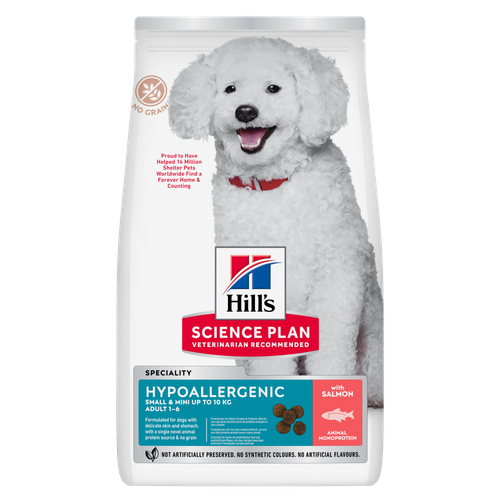 Hypoallergenic Small & Mini Adult Dog Food
Hypoallergenic Small & Mini Adult Dog FoodHILL'S SCIENCE PLAN Hypoallergenic Small&Mini Adult dog food with Salmon is complete pet food for adult small dogs 1–6 years old. It's formulated for dogs with delicate skin and stomach, with limited high quality novel protein sources & no grain.
Shop Now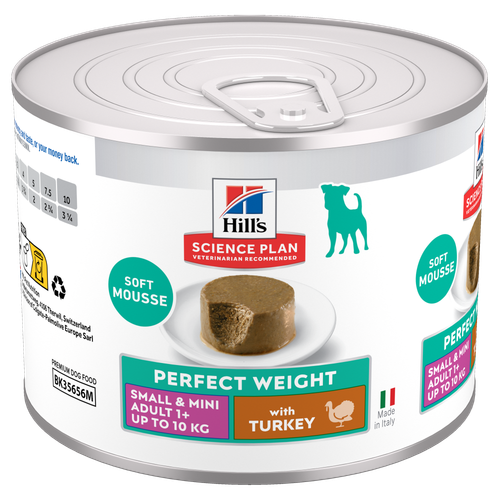 Perfect Weight Small & Mini Adult Dog Food
Perfect Weight Small & Mini Adult Dog FoodHill's Science Plan Adult Small & Mini Dog Food with Turkey is a complete premium pet food for adult small dogs from 1 year old that are prone to weight gain or slightly overweight. This deliciously smooth mousse is formulated to deliver the appropriate amount of energy to support weight maintenance in adult dogs.
Shop Now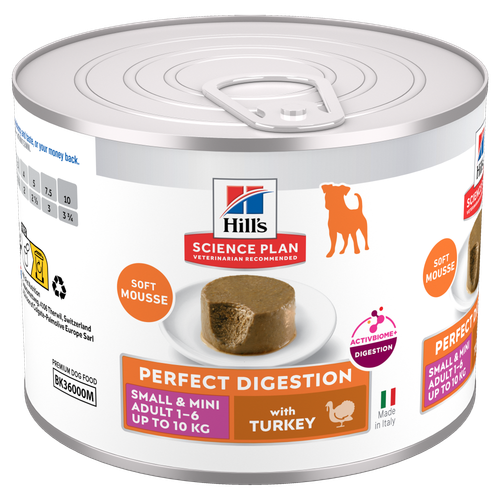 Perfect Digestion Small & Mini Adult Dog Food
Perfect Digestion Small & Mini Adult Dog FoodHill's Science Plan Perfect Digestion Small & Mini Adult Dog Food with Turkey is a complete premium pet food for small breed adult dogs aged 1–6 years. This deliciously smooth mousse is precisely balanced to deliver the appropriate amount of energy and to support digestive health in adult, small breed dogs.
Shop NowFeatured products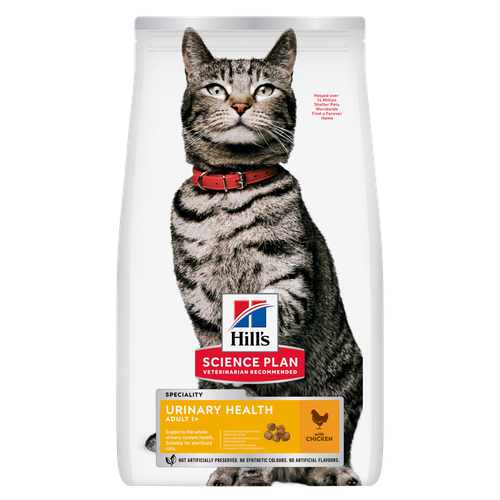 Urinary Health Adult Cat Food with Chicken
Urinary Health Adult Cat Food with ChickenHill's Science Plan Urinary Health Adult Cat Food with Chicken supports the health of the whole urinary system. Suitable for sterilised cats.
Shop Now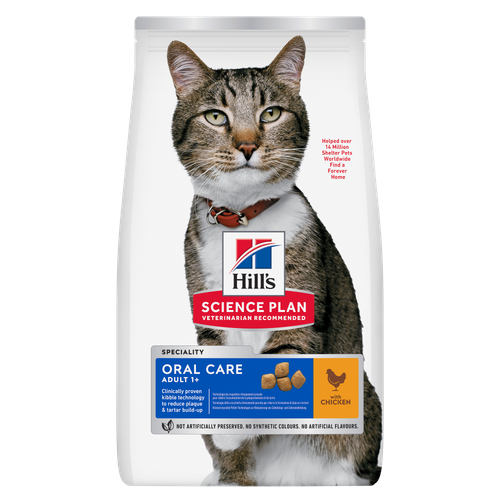 Oral Care Adult Cat Food
Oral Care Adult Cat FoodHill's Science Plan Oral Care Adult Cat Food with Chicken contains clinically proven kibble technology to reduce plaque & tartar build up.
Shop Now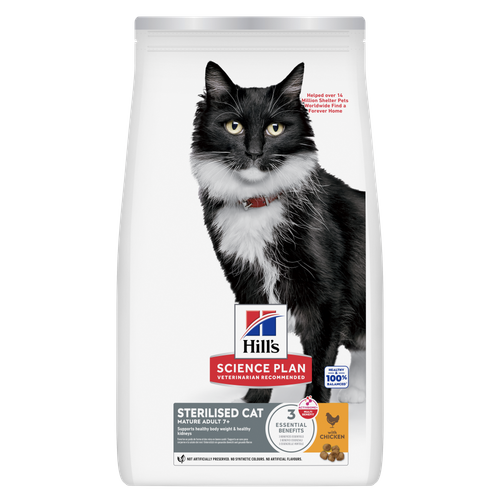 Sterilised Mature Adult Cat Food
Sterilised Mature Adult Cat FoodHill's Science Plan Sterilised Cat Mature Adult Cat Food with Chicken is specially formulated with ActivBiome+ Multi-Benefit Technology. It is a precisely balanced nutrition tailored to meet the needs of mature adult sterilised cats, ages 7+, and to promote graceful ageing.
Shop Now -
Dog
- Dog Tips & Articles
-
Health Category
- Weight
- Food & Environmental Sensitivities
- Urinary
- Digestive
- Joint
- Kidney
-
Life Stage
- Puppy Nutrition
- Adult Nutrition
- Senior Nutrition
Cat- Cat Tips & Articles
-
Health Category
- Weight
- Skin & Food Sensitivities
- Urinary
- Digestive
- Kidney
-
Life Stage
- Kitten Nutrition
- Adult Nutrition
Featured articles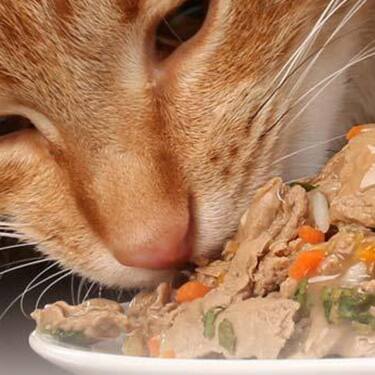 Tips For Mixing Wet And Dry Pet Food
Tips For Mixing Wet And Dry Pet FoodDiscover tips for mixing wet and dry pet food to ensure balanced nutrition and variety for your pet. For comprehensive feeding advice, visit Hill's Pet UK.
Read More Develop your gut instinct | Hill's Pet
Develop your gut instinct | Hill's PetDigestive disorders can affect any part of the digestive system, from the stomach, small intestine and through to the large intestine.
Read More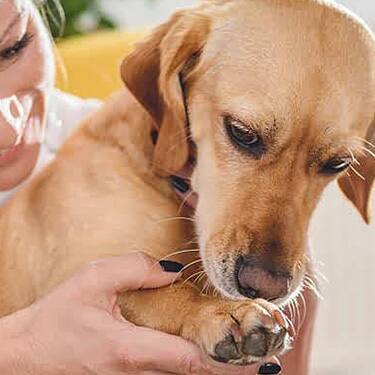 Virtual Vet Visits: What You Need to Know
Virtual Vet Visits: What You Need to KnowLearn the ins and outs of a televet appointment before you talk to a vet online.
Read More -


How will your cat react to having a new arrival in the house and how do you ensure your cat and baby get along? Vet and behaviourist Francesca Riccomini offers advice on how to prepare your family feline for a new addition .
For many owners their cat represents another family member and as such has equal access to all the resources their home has to offer. In feline terms, this includes human attention, which is often available on demand whenever anyone is at home. So can cat and baby get along?
Centre of attention
It is not unusual for a pet to be nurtured and even spoiled, becoming the 'baby' of the family. This is fine if it suits the cat's temperament and everyone is involved, but problems can arise when a baby is suddenly introduced into the household.
The problems can be severe if the cat is mature and has had little, or only negative, experience of babies and young children, particularly during the important kitten socialisation period of between two and seven weeks. Many of us acquire our cats when they are well past this stage or don't have the opportunity to introduce tiny kittens to small children. Although it is not impossible to make up for this lack of early experience, it is best to make plans and preparations well in advance of a baby's birth.
Different responses from different cats
How an individual cat responds to a new arrival will depend upon genetics (breed and parentage as well as species), personality and experience. Sometimes, these do not predispose a cat to coexist harmoniously and safely with babies and young children. Some owners, after careful consideration, decide that they cannot take the responsibility of keeping a particular pet when they have children and so find their cat a good home which is more suited to their needs. Sadly, the decision to relinquish a pet is not always so well considered and aggression towards children or urine spraying (for which the unprepared arrival of a baby can be a stimulus) is not an uncommon reason for cats to end up in a rescue centre. It is not always possible to prevent such a sad outcome by pre-emptive action but it can often be avoided by careful thought and forward planning.
Living in harmony
For the best chance of your extended family living happily together, two aspects need to be considered: the environment and the pet. Your cat needs to have their own bed, feeding and water dishes, toys, litter tray etc. These need to be sited somewhere convenient for all the humans in the house, but also in the right spot for your cat. The litter tray should be in a private position away from your cat’s food and away from areas of busy traffic, like the kitchen and hallway. Your cat’s scratching post should be near an external door or close to where your cat already chooses to mark their territory by clawing. If possible, find somewhere elevated for your cat to eat or rest, or an area which can be sealed off with a baby gate. This gives them a way to escape the advances of a toddler. If the current location of your cat's bed, litter tray and other requirements are going to impractical or unsuitable when the baby arrives, you will need to make changes now. It is important, particularly for an elderly cat, that these changes are made gradually.
Somewhere to hide
The preferred feline method of dealing with something unsettling or a potential threat, is to hide, preferably in a high, dark, secluded place from which there is a good view, so that the situation can be assessed in safety. Such sanctuaries can easily be provided by putting cardboard boxes on their side, or igloo beds, on top of furniture or sturdy shelves. Provide a number of such retreats in various areas of your home, but especially where you will spend time with your baby and encourage their use by putting favoured blankets or tasty treats in them.
No entry
Often the room which is to be the nursery is one the cat had been allowed free access. It is advisable for this to be stopped well before the baby takes up residence. To reduce an adverse reaction to the change and to prevent 'barrier frustration', spray the closed door and frame with Feliway or rub with 'facial cloths'. Don't forget that indoor cats will be more affected by even small changes in their environment, territory and lifestyle, than those with access to the outdoors.
Changes to territory
The feline olfactory system is very sensitive and scent is an important means of communication. Any disturbance in the scent profile of a cat's territory can have a major impact and cause real distress to a pet. This is frequently unrecognised, but explains why new equipment for the baby often becomes the target for urination or spraying, as a cat attempts to 'mark' the articles with their own scent. It is worth acquiring from friends and relatives as many everyday baby items as possible so that your cat can be introduced ahead of time to the wide range of often pungent odours they will later encounter! These may be minimal to us but could represent a major stressful intrusion for a cat. Bringing things into the home in a gradual and controlled way should not only reduce any aversive qualities associated with them, but should help by creating opportunities to condition positive associations. Also, offer tasty food or indulge in a favourite game, when something new first arrives.


Tasty Tips
Praise, play, food
It is worth remembering the essential 'rules' of never reassuring a pet's anxiety or fear, as this will only make it worse. Reinforce relaxed behaviour by your cat in the face of any potential stressor with praise, petting, play or food. A cat's hearing, like their sense of smell is much better than ours so it’s worth playing, initially at low volume, tapes of baby noises. Again, reward the behaviour you wish to encourage and only increase the volume gradually as your cat indicates that they can cope.
First encounters
It is helpful to have babies and young children visit your home, but choose the latter with care. Cats can find the experience overwhelming if confronted by youngsters who insist on pursuing them. Always supervise encounters and ensure that any handling is gentle and appropriate. Children should never be allowed to pick up a cat they are not strong enough to hold them comfortably. They should always be shown how to support the pet's full weight with a hand under the cat’s bottom so that the cat doesn't dangle from the front legs. Remember that some conscientious children, when told not to let a kitten or small cat fall, inadvertently squeeze too hard so that their good intentions end up hurting the animal. It is best to stick to hands-off interaction, such as playing with fishing rod toys, balls or a torchlight against the wall, sitting quietly near a cat or perhaps giving them a gentle stroke or grooming if your cat won't find that too intrusive. Again, making the experience pleasurable by reinforcement with praise or a treat can help to consolidate the positive associations with the presence of small humans. Never let anyone, including children, encourage a cat or kitten to play directly with fingers, toes or any other part of the human anatomy. This can lead to injury at a later date and sometimes to problems with aggression.
Gradual change
If your relationship with your cat has been very close, it may well be difficult to find the time to sustain the same degree of affection once the new baby arrives. So it would be sensible and kinder to your cat to dilute the emotional intensity between you well in advance. Anticipate your new timetable and establish a different routine for your cat which you are fairly confident you will be able to sustain. Introduce changes gradually to minimise the impact. If your cat is used to your undivided attention, withdraw it initially for short periods as far in advance of the baby's arrival as possible. You can gradually lengthen the periods of withdrawal at a rate which reflects your cat's ability to cope. Instigate times of structured play or grooming to suit your new timetable and your cat's needs, but if your cat appears stressed, don't impose your attention as it will only cause more upset and your cat may even lash out at you.
Behavioural problems
If your cat has existing behavioural problems which you have previously 'put up with' now is the time to get them sorted out, as it is likely to worsen with the upheaval and disruption caused by a tiny baby. When your baby arrives, try to set aside time for your cat and stick to established routines. Predictability is very important to felines. If you are simply too busy to cope with the demands of both baby and cat, consider inviting friends or family known to your cat to provide one-to-one sessions of play or grooming. If your cat tries to run away from your children never try to thwart them. Flight is a natural feline reaction to anything strange. Restraining will cause stress and fear could spill into aggression if they believe that they are trapped and have lost control of the situation.
Bringing home baby
This is especially important when you first bring baby home. If you have undertaken the preparation detailed above, your cat will hopefully not be too averse to the new arrival. Installing plug-in Feliway diffusers at various points in the home, particularly areas associated with the baby, should help to provide reassurance. You may also win them over by offering favoured food which is not regularly available. Some cats become more concerned about children when they are mobile than when they are tiny babies. A crawling or toddling child can take a cat by surprise and baby squeals and shrieks can be frightening. Providing places of retreat is even more important at this stage. Finally, children should never be brought up, even inadvertently, to view pets as playthings. From the outset they must be taught to respect the cat, to approach and handle them appropriately because ultimately there are so many benefits and pleasures to be derived from growing up in a family with a well-adjusted companion animal.
Ref: Feline Advisory Board - www.fabcats.org


One of our staff authors prepared this article for you
Related products

Hill's Science Plan Oral Care Adult Cat Food with Chicken contains clinically proven kibble technology to reduce plaque & tartar build up.

Hill's Science Plan Urinary Health Adult Cat Food with Chicken supports the health of the whole urinary system. Suitable for sterilised cats.

Hill's Science Plan Sterilised Cat Mature Adult Cat Food with Chicken is specially formulated with ActivBiome+ Multi-Benefit Technology. It is a precisely balanced nutrition tailored to meet the needs of mature adult sterilised cats, ages 7+, and to promote graceful ageing.
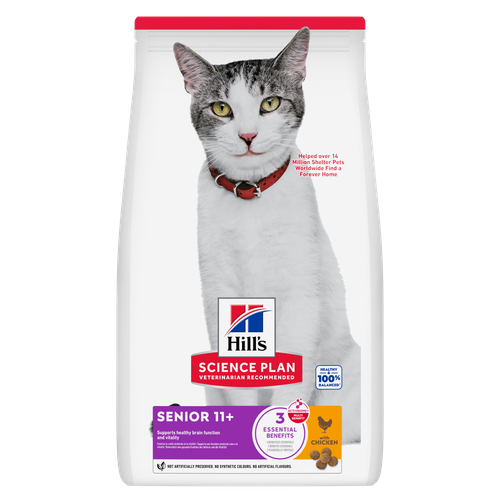
Hill's Science Plan Senior Cat Food with Chicken is a complete pet food, specially formulated with ActivBiome+ Multi-Benefit Technology.
This food supports healthy aging during the golden years. Contains a special ingredient blend to help keep older cats agile, more alert & interactive.
Related articles
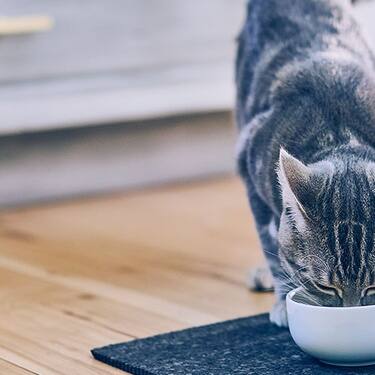
Good nutrition is about the right balance of nutrients. Learn more about health issues when feeding a cat food that has an improper nutritional balance from your friends at Hills Pet Nutrition.
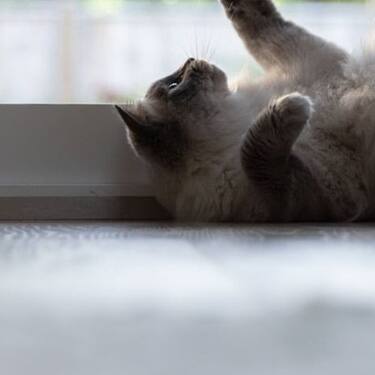
Feeding time can be a wonderful bonding opportunity for you and your cat. Find out how to make the most of it and create a healthy habit with HIll's Pet UK.
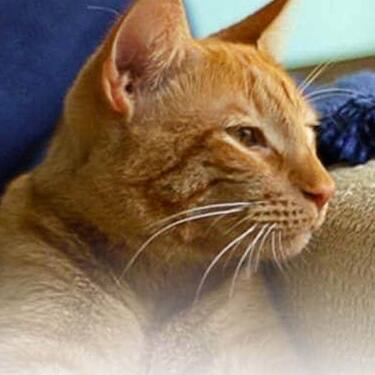
Find the right Hill
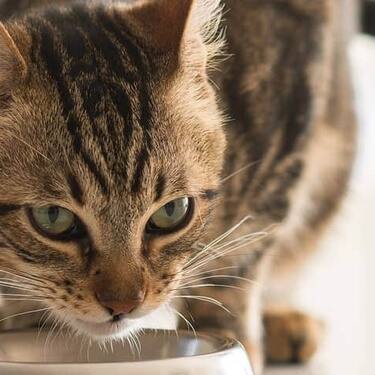
Discover what you can do to spot and support a sensitive cat stomach. See what routines and food you can implement to help your cat be happy and healthy.
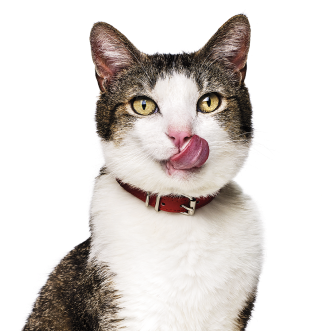
Put your cat on a diet without them knowing
Our low calorie formula helps you control your cat's weight. It's packed with high-quality protein for building lean muscles, and made with purposeful ingredients for a flavourful, nutritious meal. Clinically proven antioxidants, Vitamin C+E, help promote a healthy immune system.
Put your cat on a diet without them knowing
Our low calorie formula helps you control your cat's weight. It's packed with high-quality protein for building lean muscles, and made with purposeful ingredients for a flavourful, nutritious meal. Clinically proven antioxidants, Vitamin C+E, help promote a healthy immune system.

